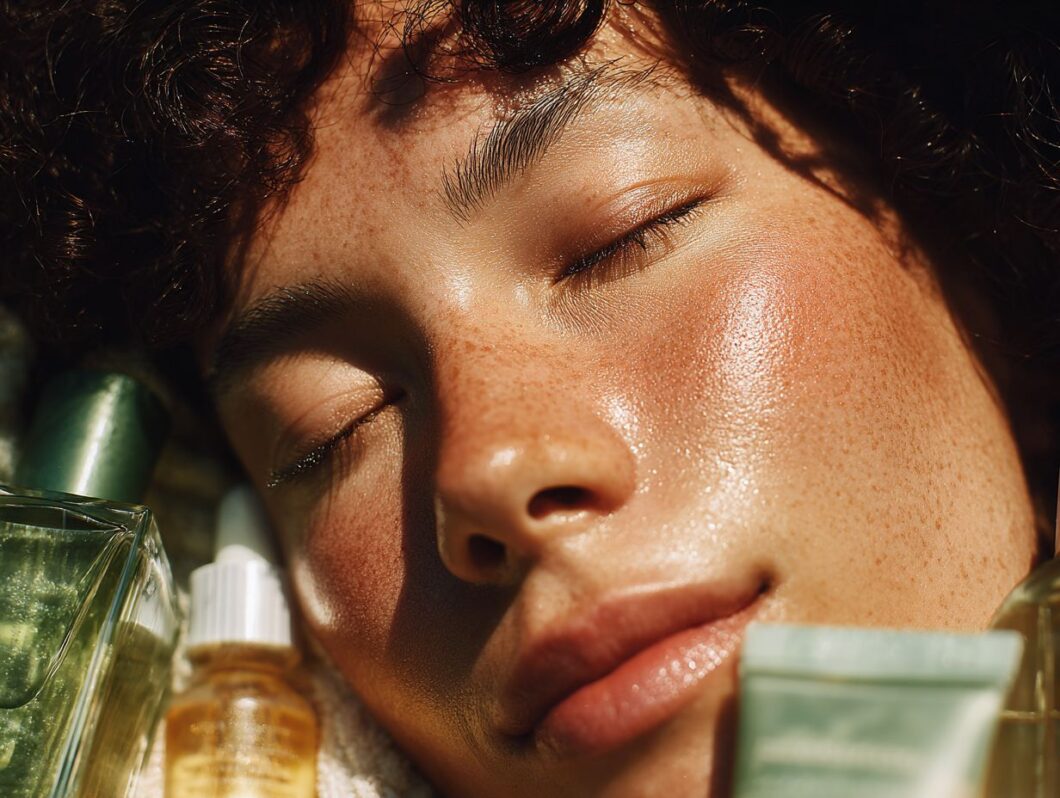In the pursuit of achieving radiant skin, I find that new techniques are continually emerging, and one of the latest trends capturing attention is skin flooding. This technique, popularized on TikTok, involves layering hydrating products to maximize moisture. But what exactly is skin flooding, and why has it garnered so much discussion? In this article, I will unpack the concept of skin flooding, examining its benefits for skin health and appearance. I will provide a step-by-step guide on how to practice this technique effectively, discuss potential risks to be mindful of, and compare it to other popular skincare methods. Prepare to discover whether skin flooding is the missing link in your skincare routine.
Key Takeaways:
Understanding Skin Flooding
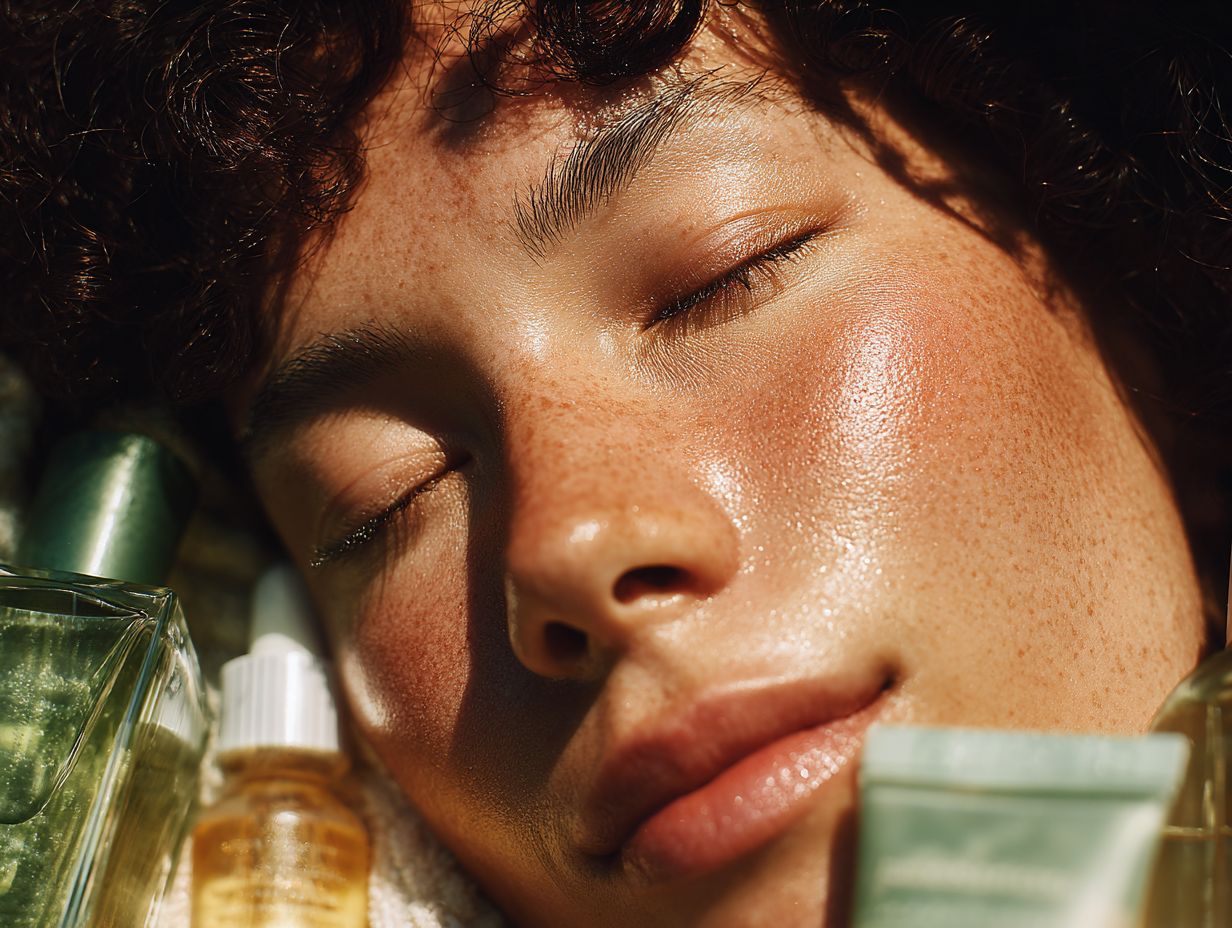
I utilize skin flooding, an innovative skincare technique that combines multiple hydrating products to enhance skin hydration and improve overall appearance.
This method involves layering lightweight serums, such as hyaluronic acid and niacinamide, beneath a rich moisturizing cream to maximize product absorption and establish a moisture barrier.
Dermatologists recommend this approach for various skin types, including acne-prone and mature skin, as it effectively achieves a dewy glow without excess shine. In fact, the team at Karger discusses how understanding skin hydration can significantly improve skincare routines.
By understanding the principles of skin flooding, I can tailor my skincare routine to attain optimal hydration benefits, resulting in healthier and more radiant skin. Dermatologists like Dr. Marisa Garshick endorse this method for its effectiveness.
What is Skin Flooding?
Skin flooding is a technique I utilize that involves applying multiple hydrating products in layers to create a moisture barrier that effectively locks in hydration. This method is particularly advantageous for individuals dealing with dry or dehydrated skin, as it maximizes the effectiveness of each product.
I typically begin the process with a hydrating serum that is rich in ingredients like hyaluronic acid, which is well-known for its ability to attract and retain moisture in the skin. After applying the niacinamide serum, I follow up with a lightweight moisturizer to seal in the benefits. For added hydration, I often layer products containing glycerin on top.
The key is to select products with complementary ingredients that work harmoniously to enhance overall skin hydration. This results in a plump, dewy complexion that feels refreshed and rejuvenated. I particularly recommend this technique during colder months or in dry climates, where the skin is prone to losing moisture more rapidly.
Benefits of Skin Flooding
I find that the benefits of skin flooding are numerous and impactful. This technique significantly enhances skin hydration and contributes to a glowing complexion by establishing a well-hydrated moisture barrier.
Through skin flooding, I can achieve deeper product absorption, ensuring that my skin receives maximum hydration from various products. Dermatologists often recommend this method for individuals dealing with dry, dehydrated, or aging skin, as it improves overall skin appearance and health. According to Good Housekeeping, understanding skin hydration is crucial for maintaining optimal skin health, especially when utilizing methods like skin flooding.
By layering hydrating serums, such as those containing hyaluronic acid and niacinamide, I not only boost hydration but also support my skin’s natural barrier, resulting in a more radiant look.
Improving Skin Health and Appearance
Improving my skin health and appearance through the technique of skin flooding has led to noticeably glowing skin, as this method effectively hydrates deeply and enhances texture.
This approach involves layering hydrating products to lock in moisture, making it particularly effective in addressing issues such as dryness, dullness, and uneven skin texture.
For optimal results, I focus on using a combination of hydrating serums and rich moisturizing creams containing ingredients like hyaluronic acid and glycerin. Brands such as Origins, CeraVe, and Beauty Pie offer excellent options. These components draw water into the skin and create a protective barrier, which significantly enhances overall moisture retention.
By regularly engaging in this practice, I have elevated my skin’s radiance, making it appear plumper and healthier.
Consequently, my complexion not only becomes more vibrant but also feels smoother and more balanced, effectively tackling many common skin challenges.
How to Perform Skin Flooding
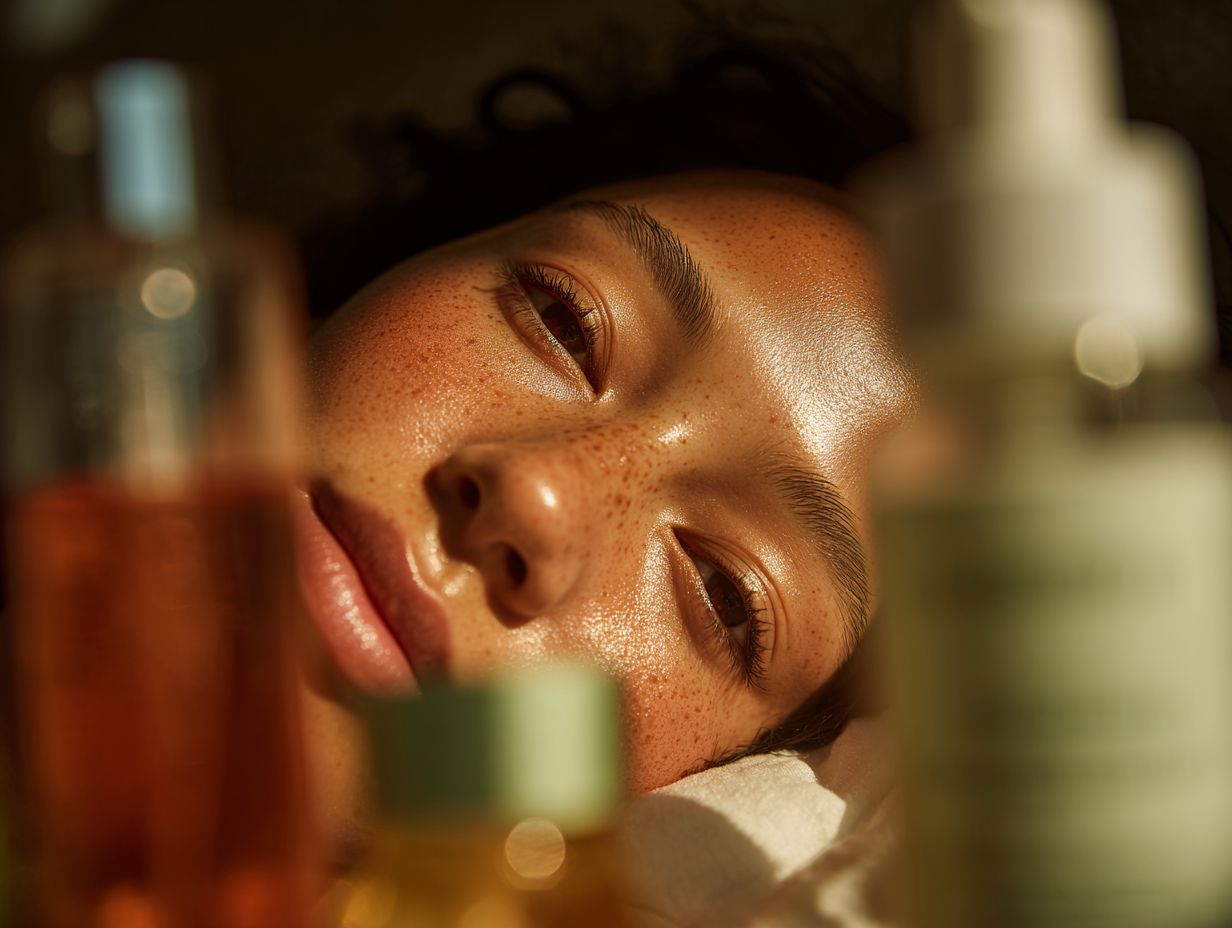
I engage in skin flooding as part of my strategic skincare routine, which begins with the application of a gentle cleanser. This initial step is essential for removing impurities and preparing my skin to absorb the hydrating products that will follow.
I then layer lightweight serums, such as niacinamide or hyaluronic acid, which are effective in attracting and retaining moisture. Finally, I finish with a rich moisturizing cream to seal in the hydration and provide barrier support.
This comprehensive approach enhances the overall hydration benefits and results in a healthy, dewy glow, ensuring maximum product absorption.
Step-by-Step Guide
The step-by-step guide for skin flooding begins with cleansing my face using a gentle cleanser, followed by layering hydrating products like niacinamide serum and hyaluronic acid to achieve optimal moisture retention. This initial step is crucial as it prepares my skin to effectively absorb the subsequent products.
After cleansing, I choose a hydrating essence or toner tailored to my specific skin type. For example, I opt for a lightweight formula if my skin is oily, or a richer option if it’s dry or mature. For acne-prone skin, I look for products that contain ingredients like hyaluronic acid or glycerin, as these won’t clog pores.
- Brands such as CosRX and Neutrogena offer various formulations suitable for different concerns.
Next, I apply a serum enriched with vitamins or antioxidants before sealing in the moisture with an appropriate cream or oil, particularly if I am seeking intense hydration. This comprehensive routine ensures that my skin looks plump, healthy, and radiant.
Potential Risks and Precautions
While I find skin flooding to be beneficial, I recognize that it may present potential risks and precautions that I should be mindful of, especially when considering different skin types and conditions.
For individuals with oily or acne-prone skin, this technique can lead to excess shine or clogged pores if not executed properly. It is essential to consult with skincare professionals or dermatologists who can customize the skin flooding process to meet individual needs and ensure that the products used do not aggravate existing skin concerns. This aligns with findings from the American Academy of Dermatology, which highlights how improper skincare trends can sometimes exacerbate skin issues.
Considerations Before Trying Skin Flooding
Before embarking on skin flooding, I find it essential to consider my individual skin type and consult with dermatologists to ensure that the products I choose align with my personal skincare goals.
Different skin types, such as oily, dry, or sensitive, can react differently to layered hydration techniques. For oily skin, lightweight formulas are preferable. It’s important for me to be mindful that overloading my skin with products may lead to breakouts or irritations, especially if I am prone to conditions like acne or eczema. Consulting skincare professionals such as Dr. Michelle Green or Dr. Anna Chacon is advisable.
I recommend introducing new products gradually and always conducting a patch test before fully incorporating them into my routine. While occlusive agents like petroleum jelly can effectively seal in moisture, they’re not suitable for everyone and may worsen certain conditions.
For those with specific dermatological concerns, I believe consulting a skincare professional for tailored recommendations is crucial. This ensures that my hydration methods promote healthy skin rather than causing any adverse reactions.
Alternative Methods for Skin Health
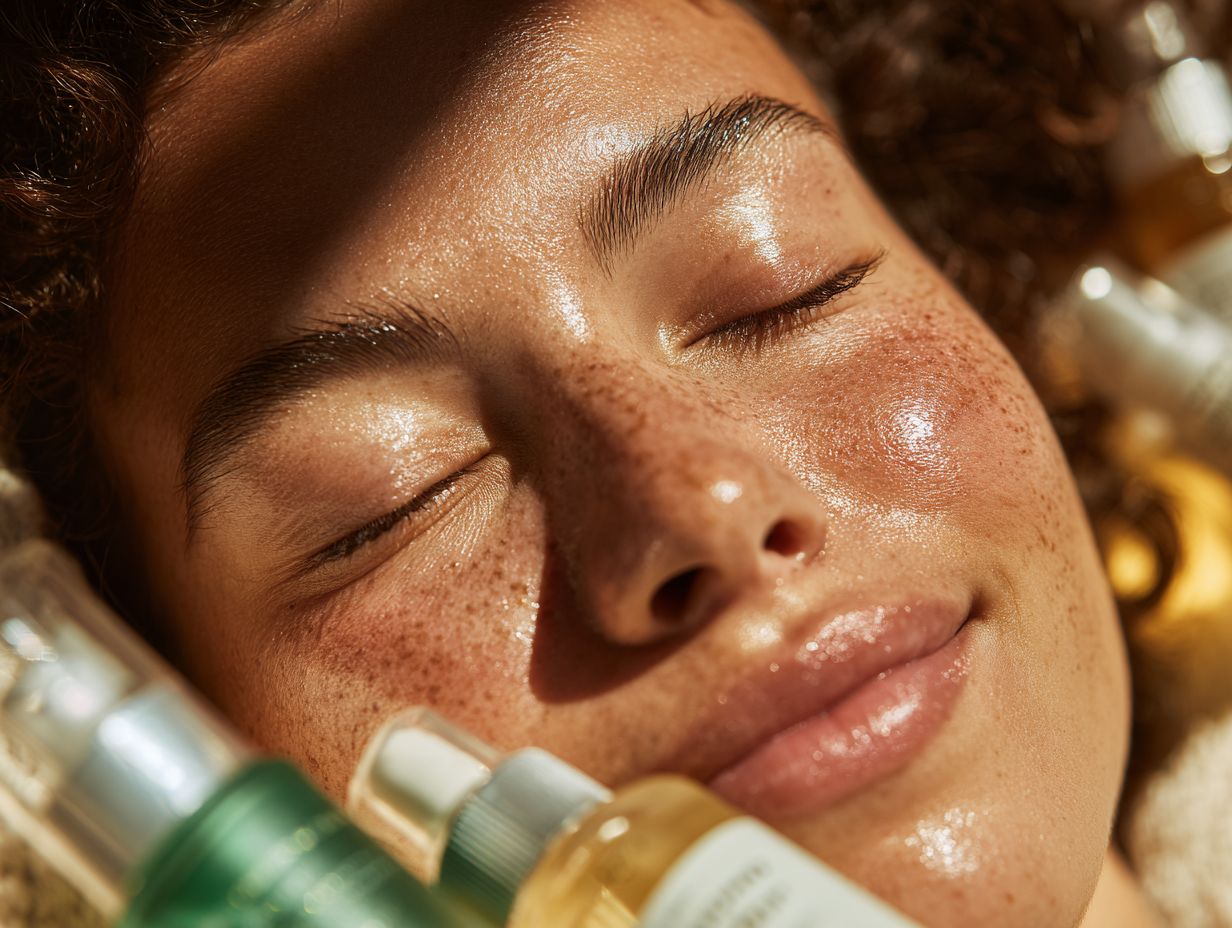
While I recognize that skin flooding is an effective technique for enhancing hydration, I also acknowledge that there are several alternative methods for maintaining skin health that can be equally beneficial.
Comparing Skin Flooding to Other Techniques
In my exploration of skin flooding compared to other skincare techniques, I have identified distinct differences in approach, effectiveness, and product usage that contribute to achieving optimal hydration.
For example, skin flooding focuses on layering hydrating products, typically beginning with a hydrating serum followed by a moisturizer. In contrast, methods like the occlusive technique prioritize sealing in moisture by utilizing heavier creams or oils, such as petroleum jelly. This approach is particularly beneficial for individuals with exceptionally dry skin, as it effectively locks in hydration.
On the other hand, techniques such as hydrating mists or gels offer immediate relief and can be seamlessly integrated with both skin flooding and occlusive methods, providing versatile options.
Ultimately, the choice of approach depends on individual skin needs and conditions, allowing one to complement or even replace skin flooding based on how their skin feels and reacts. Whether one prefers a lighter, more airy hydration or a rich, enveloping moisture can significantly shape their skincare routine.
Frequently Asked Questions
What is Skin Flooding?
Skin flooding is a skincare technique that involves saturating the skin with a specific product or ingredient for a prolonged period of time.
What are the benefits of Skin Flooding?
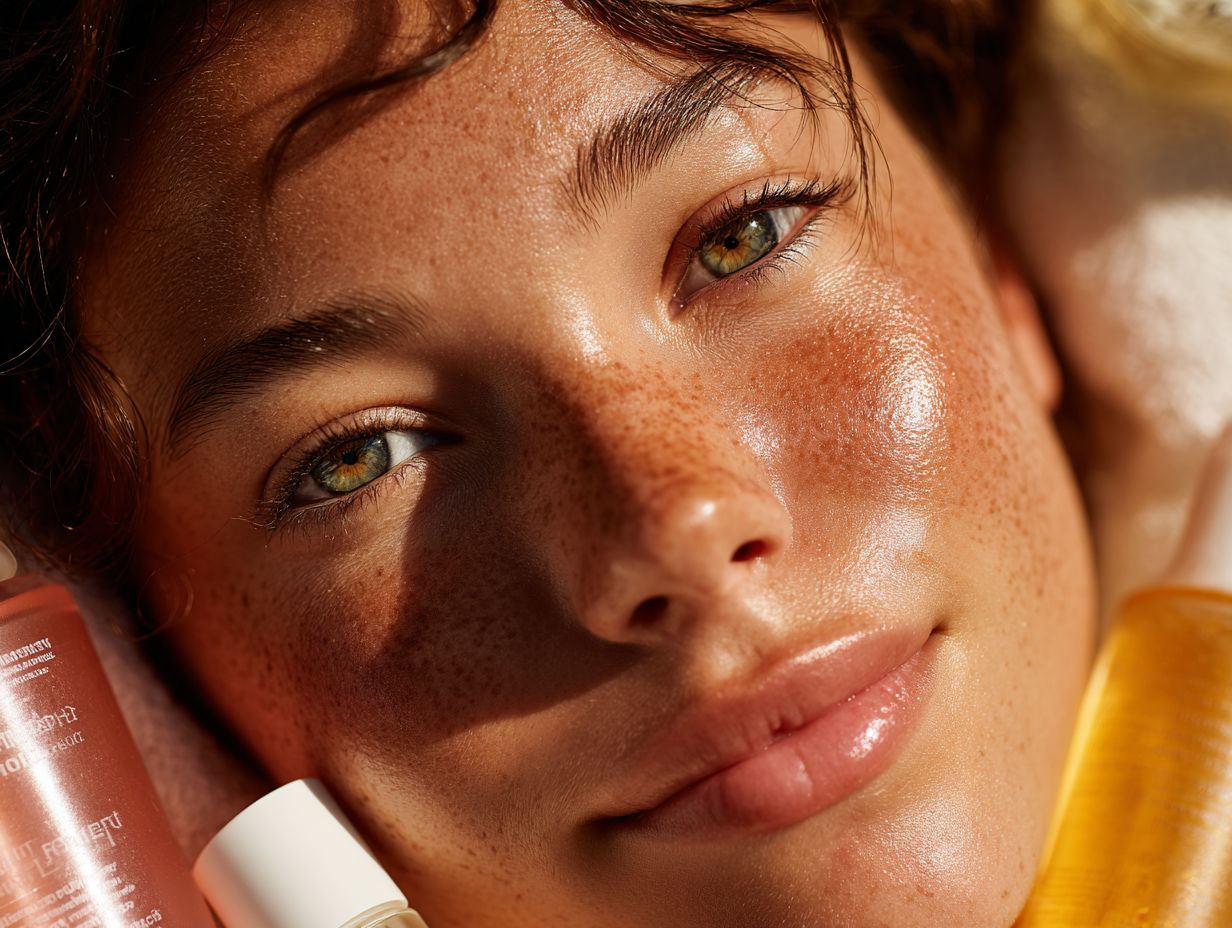
Skin flooding can help to deeply hydrate and nourish the skin, improve skin texture, and enhance the absorption of skincare products.
What products can be used for Skin Flooding?
There are various products that can be used for skin flooding, including serums, toners, essences, and even sheet masks.
What is the recommended duration for Skin Flooding?
The duration for skin flooding can vary depending on the product and individual skin needs, but it is typically recommended to leave the product on for at least 10-15 minutes. For example, using a moisturizing lotion from CeraVe or Origins can enhance the experience.
Should I try Skin Flooding?
Whether or not you should try skin flooding depends on your skin type and concerns, such as having oily skin. It is always best to consult with a dermatologist like Dr. Marisa Garshick, Dr. Michelle Green, or Dr. Anna Chacon before trying any new skincare techniques.
Can anyone do Skin Flooding? TikTok trends may suggest so, but careful consideration is needed.
While skin flooding is generally safe for most skin types, those with sensitive skin may want to approach with caution and do a patch test first. It is also important to follow the recommended duration and not leave the product on for too long to avoid potential irritation. Consulting with experts such as Dr. Christina Lee Chung can provide personalized advice.


